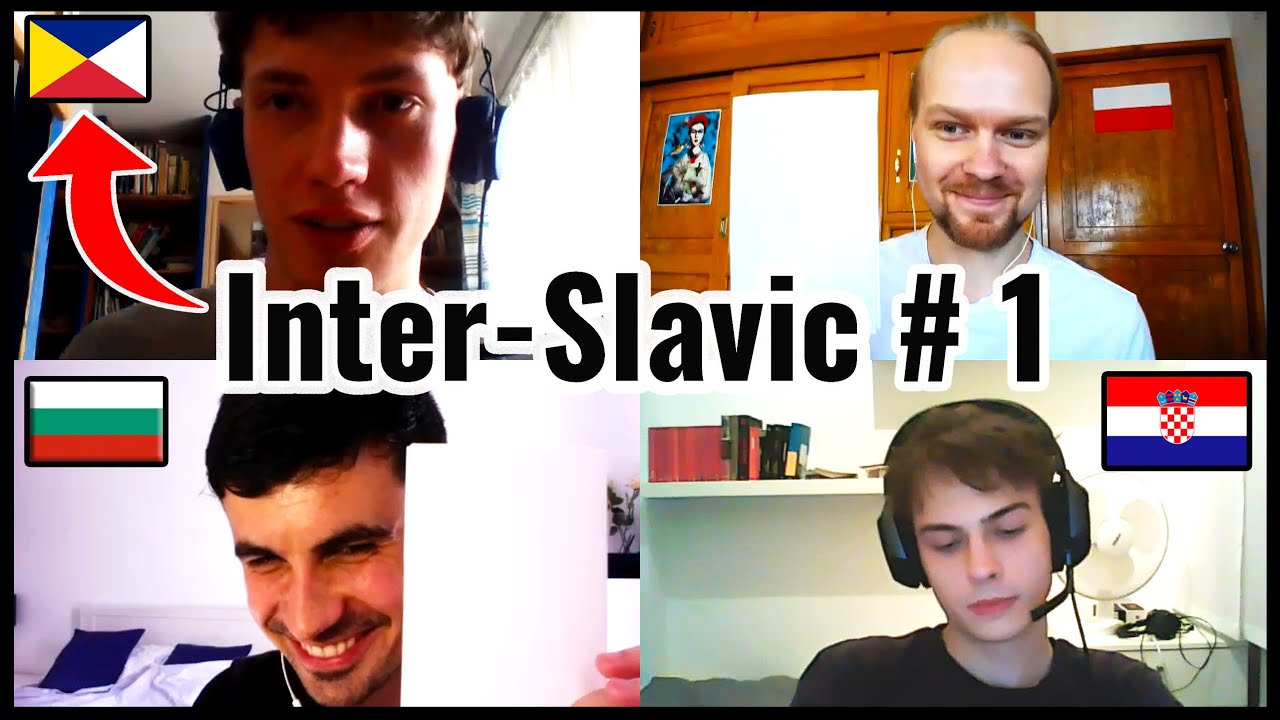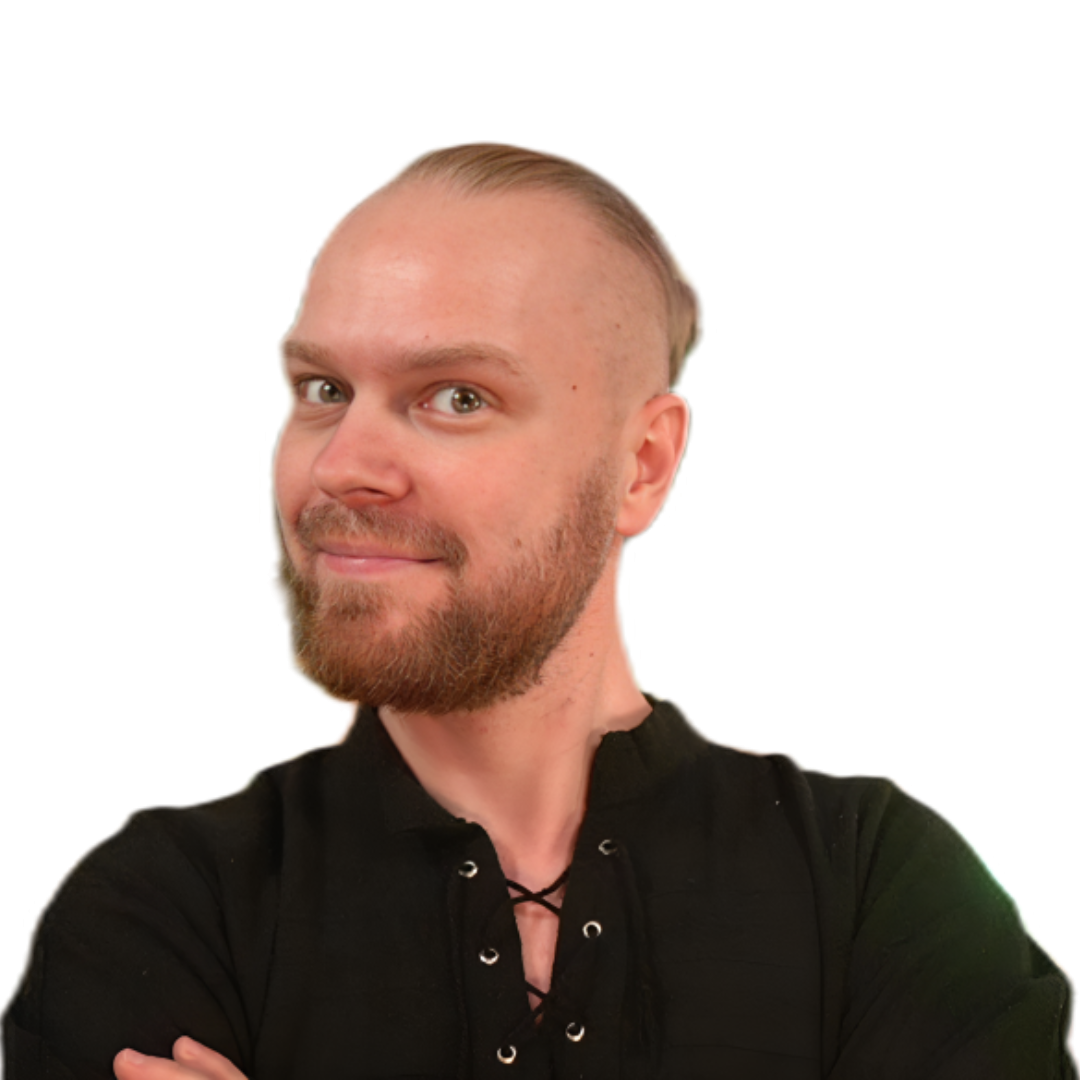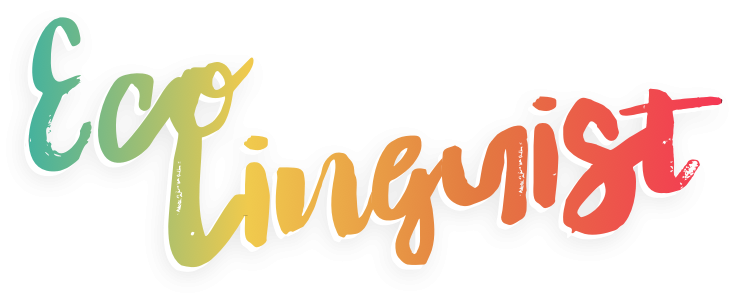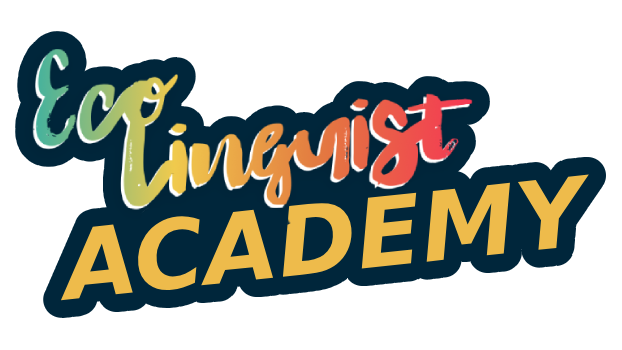Behind the Scenes of the Interslavic Episode
-
How a quiet experiment reshaped my channel — and surprised us all
-
Reconnecting and Shaping the Experiment
-
Designing the Experiment
-
Recruiting the Participants
-
A Viral Surprise
-
When a Side Project Becomes the Spotlight
-
A Turning Point
-
Where It Led Me
-
Watch the video
How a quiet experiment reshaped my channel — and surprised us all
In August 2019, I released a video that unexpectedly reshaped the direction of my YouTube channel. It wasn’t my first experiment, and definitely not the most polished one — but it struck a nerve. Looking back, I see it as a turning point. Not just because of the views it gained, but because of everything that happened around it, often without me realizing.
The idea for an Interslavic video wasn't born overnight. It actually began with a message from Michał in September 2017. At that time, my channel featured a few freestyle Polish-Slavic conversations. Michał offered to add subtitles to one of them, "Polish Russian Conversation" – one of the first in that series. Back then, YouTube still allowed viewers to contribute subtitles, a feature that wasn’t widely known – but I remember being surprised one day to discover Tagalog subtitles on one of my videos — proof that someone, somewhere, had been moved enough to contribute. Michał was one of those people who saw potential in the project and wanted to get involved.
Later, Michał suggested — and was very eager — that we make something about Interslavic, the constructed language designed to be understood by all Slavs. But at the time, I didn’t have a clear format or direction for that kind of project. I stayed open to the idea, and we kept messaging back and forth — not just about Interslavic, but also about other videos on my channel. We even almost met in Poznań once when I was passing through, but he caught a cold and couldn’t make it. Over time, the idea for the Interslavic episode quietly faded, and we eventually lost touch.
🔄 Reconnecting and Shaping the Experiment
Fast forward to May 2019. I reached out to Michał, acknowledging that our initiative had been on hold for some time. In that period, I'd been focused on developing my Polish course and creating educational materials. However, I'd decided to rededicate my efforts to the Ecolinguist channel. My interest in Interslavic remained strong, and in the interim, I'd refined my conversational formats, improved my editing skills, and connected with more Slavic speakers. All of this, I felt, could be valuable for an Interslavic experiment.
Michał's response was encouraging. To my surprise, he had gone deep in the meantime — translating the entire Interslavic dictionary into Polish, building a text corpus, and working on various translations. He even mentioned translating a scientific article about folk embroidery from Bulgarian into Interslavic, despite not knowing Bulgarian. He was also involved in the Medžuslovjanska Komisija. His message read like it came from someone who had found a new language to live in.
That’s when I knew: he wasn’t just a participant. He could lead this.
🧪 Designing the Experiment
This project wasn’t just a recording — it was a months-long process of bouncing ideas, testing formats, and slowly figuring out how to make an experiment both engaging and meaningful.
At first, there was no clear plan. Michał was up for anything — “mniej i bardziej hardkorowe inicjatywy,” as he put it — and offered himself as a kind of stress-test subject for the language. He only spoke Polish, so any success in communication through Interslavic would really be a demonstration of the system’s reach.
We kept returning to the fundamental question: "What do we really want to demonstrate in this film?" Michał's objective was clear: he wanted to see for himself, and thus prove to others, "how much Interslavic helps in mutual inter-Slavic communication". He was particularly keen to counter the skepticism that "no one but Poles and Czechs will understand it".
One early idea was a one-on-one conversation, testing how well speakers of different Slavic languages could understand Interslavic. It was the simplest format, easy to organize, and a good way to isolate variables. But we quickly saw its limits. It wouldn’t show the real strength of Interslavic as a bridge. We wanted to explore whether it could also support group coordination.
That led to more interactive concepts:
A “Głuchy telefon” (telephone game), where Michał would translate a sentence into Interslavic, then participants would pass it along in their native languages, and we’d compare the final version to the original.
→ Promising, but technically messy. We’d need to isolate participants during parts of the call and carefully manage turn-taking. Risk of confusion was high.A collaborative storytelling format, where each person added a sentence in their own language, Michał translated it into Interslavic, and the next person continued the story.
→ We liked the idea, but storytelling — even in your native language — can get abstract quickly. We worried it might be too hard to follow and too difficult to evaluate meaningfully.A drawing challenge, originally conceived as a multi-directional activity: each participant would describe an image in their native language, and the others would try to draw it based on what they heard.
→ Eventually, we realized that this format introduced too many variables. Instead, we simplified it: only Michał would describe a drawing — his own — using Interslavic. The other participants would then try to recreate it based on their understanding. This kept the focus where we wanted it: on how well others could understand Interslavic, not on their ability to speak or describe.
Along the way, Michał raised deeper, structural concerns. He wondered aloud:
Should we stick to a "pure" form of Interslavic, or allow for some “flavoring” — words he recognized from other Slavic languages, even if they weren’t in the official dictionary?
He saw that kind of flexibility as natural in one-on-one interactions, where shared intuition fills the gaps. But in multilingual group settings, it could lead to uneven comprehension. What’s obvious to a Polish speaker might confuse someone from the Balkans.
This led to a key design insight: Interslavic needs to be judged not by how elegantly it's spoken, but by how reliably it's understood. We didn’t want the success of the experiment to depend on Michał’s passive knowledge of related languages. We wanted to see if Interslavic — in a structured, consistent form — could coordinate meaning across linguistic borders.
Eventually, we settled on two “competitions” that held up to this principle:
Commands — Michał gives participants short instructions in Interslavic. Did they follow them correctly?
Drawing — Michał describes an image in Interslavic. Participants draw what they understood.
We had also planned a third component: Story Relay — our most ambitious and open-ended idea. Michał suggested keeping the story a surprise until moments before recording, to avoid rehearsed responses. The idea was that he’d receive a short anecdote (in Polish or another Slavic language), retell it in Interslavic, and the others would explain what they understood. We’d then compare results.
But we quickly realized the complexity: verifying comprehension would require each participant to interpret the story in their native language, then translate their interpretation into English (or another shared language) for analysis. Doing that accurately — without overpreparing or oversimplifying — would have required off-camera work, multiple translation steps, and post-production effort that simply exceeded what we could manage as small YouTube creators.
So we let it go. Not because it wasn’t strong — but because we knew we had to keep the experiment focused and feasible.
Michał also suggested explaining early in the video that Interslavic might sound different depending on who speaks it. But in the end, I decided to keep the introduction minimal. I wanted to let the language speak for itself — to show rather than tell. Too much framing, I felt, would risk turning it into a lecture. I wanted viewers to experience the rhythm and feel of the language before they started analyzing it.
👨🏫 Recruiting the Participants
Finding participants for the experiment turned out to be one of the most unpredictable parts of the process.
We wanted speakers of different Slavic languages — ideally representing the East, West, and South Slavic branches — to see how well Interslavic could bridge real linguistic distance. But we weren’t looking for performers or academics. The idea was to involve everyday speakers: people with different levels of comfort, and no prior preparation.
The goal wasn’t polish — it was presence.
Michał was particularly mindful of one potential bias: the participants’ prior exposure to other Slavic languages. If someone already spoke several, their ability to understand Interslavic might say more about their background than about the language itself. He asked what languages each person knew, hoping to strike a balance between clarity and fairness.
But in the end, we had to work with whoever was available. The recruitment process wasn’t ideal. Michał reached out to a few professors — not to invite them into the video, but to ask whether they could help recruit students or community members. Unfortunately, most of them had limited access to students by then — the semester had just ended, and people were already off for the summer.
We briefly considered posting a public call in Slavic language groups, but it wasn’t a realistic option. My channel was still relatively small, and finding volunteers for experimental videos like this was never easy — especially when you couldn’t offer much in return beyond the experience itself.
Michał was also understandably cautious. He worried that inviting complete strangers, without any personal connection, might introduce unpredictable energy — people who didn’t know how to behave “on camera,” or who might freeze, ramble, or unintentionally derail the dynamic.
And he wasn’t wrong.
But I already knew that risk. I’d worked with volunteers before, and I’d learned you can’t control for everything. At some point, you have to let go of the idea of perfect conditions and just trust the process — or the timing, or the algorithm, or the fact that the people who are meant to show up… will.
That’s what we did.
In the end, we assembled a small but diverse group: a Bulgarian, a Croatian, and myself (as the Polish speaker). We lost our original Russian participant due to scheduling issues, and we didn’t achieve full regional coverage — but that was okay.
Because eventually, I realized: we weren’t the experiment.
The real experiment would begin after the video went live. Our role — Michał’s, mine, and the others’ — was to create the stimulus. Not the test itself, but the spark that would set it in motion. A language sample. A provocation. A point of entry.
The participants in the video weren’t the final data point. The viewers were.
People with all kinds of language backgrounds would watch this, respond to it, and leave comments — and that would become the larger test.
Would they understand? Would they be curious? Would they feel invited in — or excluded?
That’s when I understood this was never just about who we could find for one recording session. It was about what those voices could spark once the video reached the world.
📈 A Viral Surprise
When the video launched in August 2019, I had just over 3,000 subscribers. None of us expected it to go far. Michał guessed maybe 40k views in a dream scenario.
The video was published and after initial reactions, Michał was thrilled, noting the positive reception and feeling that the video provided much-needed "proof" that Interslavic could facilitate communication.
What happened next was completely unexpected. The video took off, and the algorithm picked it up. Comments poured in. Subscriptions jumped. It reached over 300k views within the first two weeks.
It wasn’t until later that I realized why. Around the same time, a Czech film — The Painted Bird — had premiered. It was the first feature film to use Interslavic, as a neutral cinematic language to detach characters from any one nation. The film generated buzz, and people searched for “Interslavic.”
People searching for information about the language often stumbled upon our video, found it engaging, and stayed — signaling to the algorithm that the content was worth promoting. It was a complete coincidence; I had no idea such a film existed.
My channel gained unprecedented recognition. People began associating me with Interslavic, despite my limited direct involvement. Journalists from Poland and other countries contacted me, asking about my thoughts on Interslavic, how I discovered it, if I'd tried learning it, its future, and the behind-the-scenes of our "conference." I always directed them to Michał, as he was the central figure in the episode.
He even appeared on Polish breakfast television. I was invited too, but I wasn’t in Poland at the time — and frankly, it didn’t feel right. I wasn’t the expert here. I had simply built the stage.
You can watch it here.
🔦 When a Side Project Becomes the Spotlight
At first, it felt like a win. But slowly, a strange pressure crept in. People began associating me with the Interslavic movement — as if I had taken a side, or was now its representative.
The truth is: I’ve never studied Interslavic. I’m not fluent in it. I’m just curious — like many of you.
And while I stayed open to more episodes, I didn’t want to get boxed in and my channel to become about Interslavic. I had other ideas, other languages, other formats to explore. I noticed that follow-up videos with the same languages tended to perform worse. The novelty wore off quickly, and the production time was intense.
So I made a quiet decision: I would ride the wave of interest, but not be carried away by it. I returned to natural language episodes, tested new combinations, and explored new formats. Many of those who found me through that one video stayed. Others moved on. And that’s okay.
A Turning Point
Looking back, this episode was a pivot — not just in view count, but in how I thought about my channel and audience. I realized that popularity can bring expectation. That people may want you to follow the thread they find most exciting, even if your original path leads elsewhere.
I never became an Interslavic YouTuber. But that experiment opened doors. It showed me the kind of impact a well-structured linguistic challenge can have. It inspired future episodes across other languages — Latin, Dutch, Old Norse, Interlingua, etc. — all rooted in the same core idea: Can we understand each other better than we think?
Where It Led Me
Even now, I return to that episode as a reminder: some of the most meaningful projects don’t come from grand plans. They begin with quiet curiosity, slow conversations, and a willingness to publish something a little strange — just to see what happens.
In the process, I realized the power of creating space — not to showcase expertise, but to invite others in for a shared experience. This episode wasn’t about presenting polished knowledge. It was about opening a door and letting something unexpected unfold.
👂 And You?
If you discovered Interslavic through this video — or started learning it afterward — I’d love to hear your story.
Did you try learning the language?
Are you still using it today?
Did it change the way you think about Slavic languages, identity, or communication?
What drew you to it in the first place — and what kept you going (or didn’t)?
Maybe you’ve found a new community. Maybe you drifted away. Maybe it was just a one-time curiosity.
Whatever your experience — fluent speaker, casual explorer, or quiet observer — feel free to share your thoughts in the comments or write to me directly.
I’m genuinely curious what this project sparked for others.

By clicking “I Consent” you agree to load this video from YouTube (via youtube-nocookie.com). YouTube may set cookies and collect data per the Google’s Privacy Policy.
About the author
Norbert Wierzbicki



